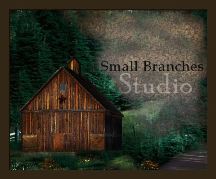Over the course of the last year, I've read a handful of books written 1850-1900's. It makes me wonder where that America has gone? Yes, life was (is) often brutish and cruel, but what a sense of optimism, too. Giants in the Earth does an excellent joy of contrasting the hope and excitement of the pioneer with the drudgery and loneliness. (And the lovely personification of the earth, nature, storms as trolls/giants is notable) The contrast plays out in a single household between husband and wife. I'm much more familiar with the prairie stories of Willa Cather, the glorious golden future laid out in neat rows of wheat; the prairie soil turned by the plow and the contented grazing of cattle. And I've often wondered about the women's perspective on the prairie life: lonely, dirty, exhausting. But I understand the other perspective too: freedom, the pleasure of making the earth bear sustenance, of watching things grow, the satisfaction of the work of one's hands. Do you know about the locust plagues?
The thyme sprouts green on the windowsill. And the zinnia seedlings keep turning towards the afternoon sunlight flooding into the house. On days like this, I can imagine spring. The prairie is brown again, but anticipating. Soon the burndowns will begin and the flames will march across the prairie, sometimes so tall that you could imagine them as the Giants walking, devouring the leavings of hope and fear, until there is nothing but the everlasting rocks, and the fertile soil: a challenge to try once again to make a life sprout. A re-blackened slate.
Subscribe to:
Post Comments (Atom)




2 comments:
Interested to read your post on Giants in the Earth. I haven't ever read the book, though have curious about it for a long time. O. E. Rolvaag's son, Karl Rolvaag, was governor of Minnesota (Democrat) from 1963 to 1967.
I don't know if you're familiar with the work of Meridel LeSueuer. LeSueur was originally from Iowa, and lived most of her life in the Midwest, and was involved one way or another with radical politics during most of her life. (She lived 1900 to 1996.)
She wrote a large number of short stories, a couple of novels (one of her better known ones is The Girl, about a working-class woman trying to survive in St. Paul during the 1930's depression), and a lyrical impressionistic history of Minnesota titled North Star Country.
Anyway mentioning in case you care to check out her writing. Thanks for posting this.
Lyle,
Thanks for visiting and posting a comment. And moreover,thank you for the book suggestion. I've not read LeSueuer yet, but I'm always open to new authors, especially those of the prairie. I'll track her work down.
And it is interesting to find that Rolvaag's son stayed in(returned to)Minnesota. I wondered when I was reading how much of the book was based in real experience and how much was just a fictitious account. I didn't and read farther about Rolvaag than the introduction.
I have enjoyed living in the prairie landscape for the past few years. Even though there are not the same visible signs of history as in a city, there is still a sense of history here that calls to me.
As for settlers,the prairie has other ideas. National Geographic published an interesting photo essay about the emptying of the Dakota prairies earlier this year that cause a bit of consternation to the folks there. The article made a nice companion piece to Giants in the Earth. I'll add it to the blog post.
Post a Comment